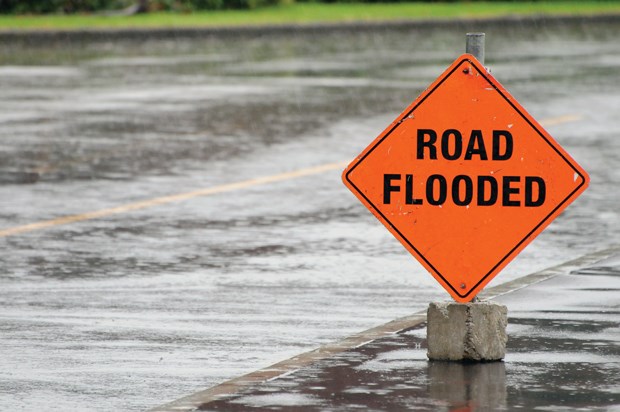As the climate changes, severe weather incidents are increasing worldwide, including here, adjacent to Burrard Inlet and Deep Cove. Torrential downpours and pounding waves have caused damage in recent years, leading the District of North Vancouver to launch a comprehensive Climate Change Adaptation Strategy.
Staff presented a broad outline to council on Dec. 7. The session included ominous warnings about dangerous levels of temperature increases, precipitation changes, rising sea levels and more extreme weather incidents. While these are anticipated to have their greatest impacts in the coming decades, some have already begun to have effects.
Fiona Dercole, the district’s section manager for public safety, said the strategy will dovetail with regional, national and international initiatives aimed at ameliorating potentially catastrophic incidents brought on by climate change.
“The district has been active internationally in terms of disaster risk reduction through the United Nations, and Canada, among many other countries in the world, has recently signed onto the Sendai Framework for Disaster Risk Reduction,” she said.
In turn, that framework was referenced in last month’s Paris Agreement, recognizing the parallel needs for climate change mitigation and climate change adaptation, Dercole added.
“We are trying to reduce disaster losses while protecting the environment, as well as public safety, and then reducing greenhouse gas emissions at the same time, which is the mitigation piece,” she said.
Already, the presentation informed council, the district has witnessed record-setting summer temperatures, severe windstorms, drought, forest fires, heavy rainfall events and limited snow.
These have had and will continue to have impacts not only on people and property, but on natural habitat and the ecosystem. The district is considering asset management strategies to account for these changes decades into the future.
Next steps in the process include developing actions and goals to address priority climate change impacts, as well as actions specific to local needs. The plan is also intended to integrate actions into current operations and day-to-day work plans while being open for ongoing review and refinement as new realities and science emerges.
Details on the strategy to date are at dnv.org/climate-action.


.png;w=120;h=80;mode=crop)
